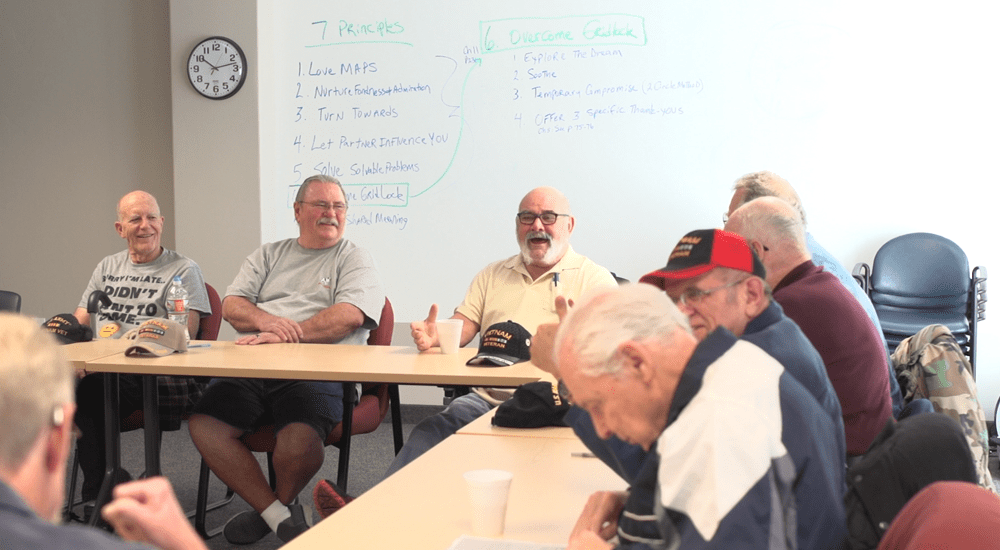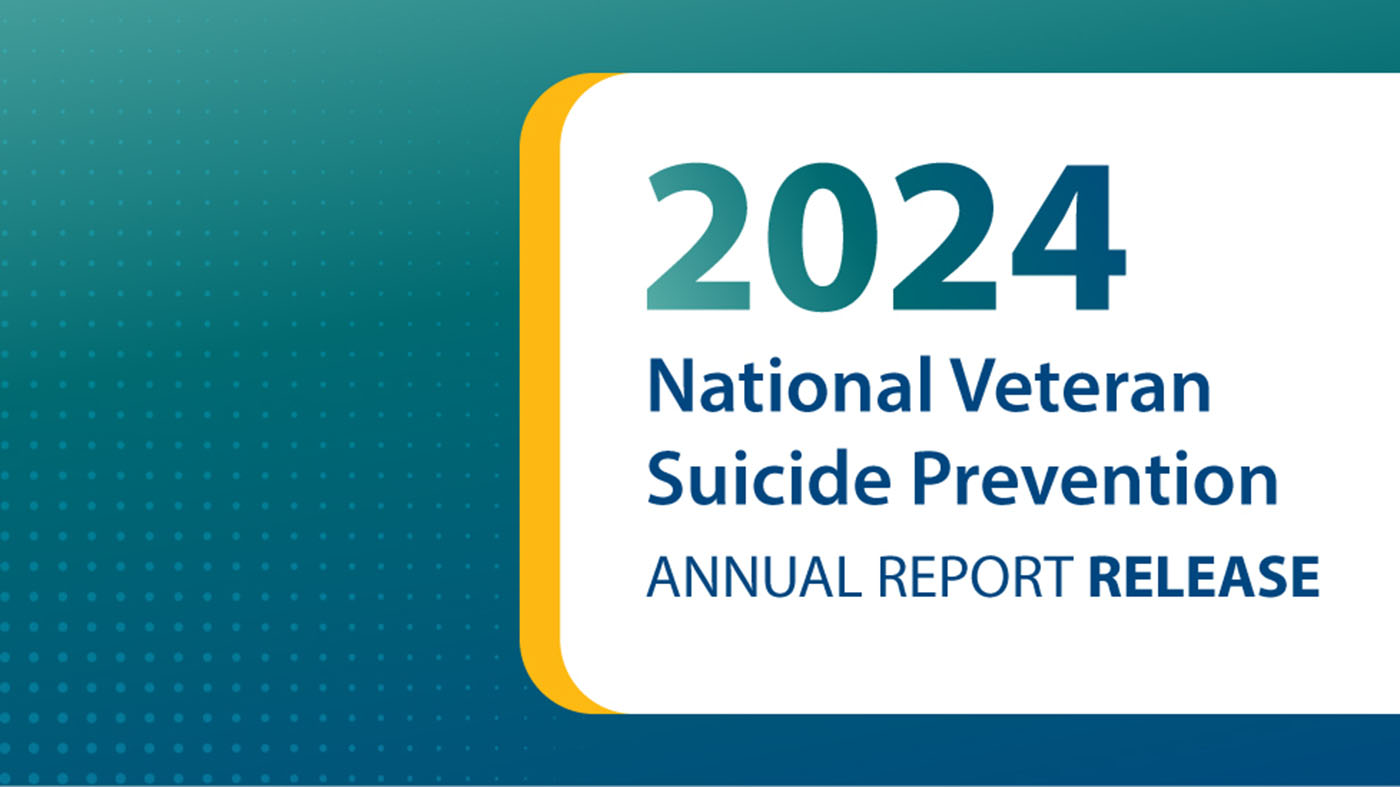Laughter thunders from the group therapy room – pictured above – at the Salt Lake City Vet Center. A group of about a dozen Vietnam Veterans, gather around tables arranged in a block “U” shape to start their monthly meeting.
“Come on in,” says one Veteran to a new Veteran.
“Welcome aboard,” says Navy Veteran, Gerald Alpin.
A series of similar greetings follow as a Veteran new to the group walks up to the table, takes a seat, and introduces himself as Richard.
“Another Richard,” the group shouts.
“You’re not a combat engineer, are ya?,” a Veteran asks Richard. “Yes, sir,” replies Richard with pride in his voice. The group bursts out in laughter. “Three Richards and three combat engineers.”
And just like that, an easy rapport is established between the “newbie” and those who have been coming to the group, some of them for years.
“I didn’t know I needed this group as much as I do.”
Candace Monzon, Salt Lake City Vet Center’s acting director, started the Vietnam Veterans Support Group about seven years ago. Candace was individually seeing multiple Vietnam Veterans at the Salt Lake Vet Center. Most of them felt alone and socially isolated. She could see the Veterans’ need to socialize with other people that really understood what they had been through, those other people, other Vietnam Veterans.
“The biggest misconception is that people are going to be forced to talk about their trauma and their war stories,” said Candace. “In reality, they come in and get to socialize. They get to learn coping skills. They get to talk about everyday stuff. Make some new friends and get out of the house.”
Terry Smart, a US Army Veteran who served in Vietnam from 1968-1969, has come since day one.
“I had my doubts,” said Terry. “It seems now like it’s helped me quite a bit.”
Co-workers discover Vietnam connection
Since day one, Veterans made connections with other Veterans. Terry and two other Veterans made up the first group. Terry immediately knew one of the other Veterans, Darryl, from work.
“Darryl and I worked with each other for 25 years,” said Terry. “Neither one of us knew we were Vietnam vets. When we come to group, we found that we were both infantry, and both basically did the same job but in different divisions and stuff.”
The group’s warm welcoming atmosphere helped Navy Veteran, Gerald Galpin, come to terms with his own service.
“I knew that I fixed the airplane so they could send them out and continue their missions,” said Gerald, “but I still didn’t consider myself their equal because what danger was I facing? These guys knew they were in danger. I was just floating around on a ship.”
The group made it perfectly clear where they stood on Navy Vietnam Veterans, and Gerald made it clear how much he appreciates that camaraderie and esprit de corps. “I’ve told all you guys how grateful I am for you. I never served in country, but you all have accepted me as an equal. That means so much.”
“You were there,” replied an Army Veteran.
“The aircraft carrier saved us,” remarked a Marine Corps Veteran. “Those aircraft carriers were a godsend.” “Amen! Amen!” said another Veteran.
“I’m not worried about that kind of thing anymore but I’ve embraced what I’ve done,” said Gerald to the group. “I didn’t know I needed this group as much as I do, how much it would do for me just to talk with these guys, these combat Veterans.”
The group is more than just a bunch of Veterans swapping “war stories.” It also helps Veterans deal with a variety of issues, many stemming from Post-Traumatic Stress Disorder.
“With the group, we all have similar issues. We don’t talk very much about what happened in Vietnam,” said Terry. “We talk about how to deal with our anger and things, but we all have that in common you know.”
Help with social isolation…trying new things
“I would say it helps with the social isolation, the social anxiety,” said Candace, “and just being around other people and trying new things.”
Candace also helps the Veterans learn coping skills. On this day, she focused on breathing. She used the metaphor of firing a rifle to signify the importance of breathing. Just before you squeeze the trigger, you breathe in, acquire your target, fire, and then breath out.
“We breathe, that’s how we focus on what do I have control over, what’s the decision I am going to make,” said Candace. “Before you are going to take action, breathe, come into the moment, focus on your breath. Give your brain the oxygen that it needs.”
Terry jokes that he uses the breathing techniques while driving but as with a lot their jokes, there is a nugget of truth. “Breathing techniques, we use when we get upset. Just take time and think things through a little bit more and not fly off the handle as much,” said Smart. “It’s helped a lot.”
For those Vietnam Veterans still wondering if group therapy is for them, Galpin has this message for you. “Guys out there hesitating, come, doesn’t hurt to talk and nobody’s judging you.”
 Jeremy M. Laird is a Public Affairs Specialist at VA Salt Lake City.
Jeremy M. Laird is a Public Affairs Specialist at VA Salt Lake City.
Topics in this story
More Stories
The Medical Foster Home program offers Veterans an alternative to nursing homes.
Watch the Under Secretary for Health and a panel of experts discuss VA Health Connect tele-emergency care.
The 2024 National Veteran Suicide Prevention Annual Report provides the foundation for VA’s suicide prevention programs and initiatives.







